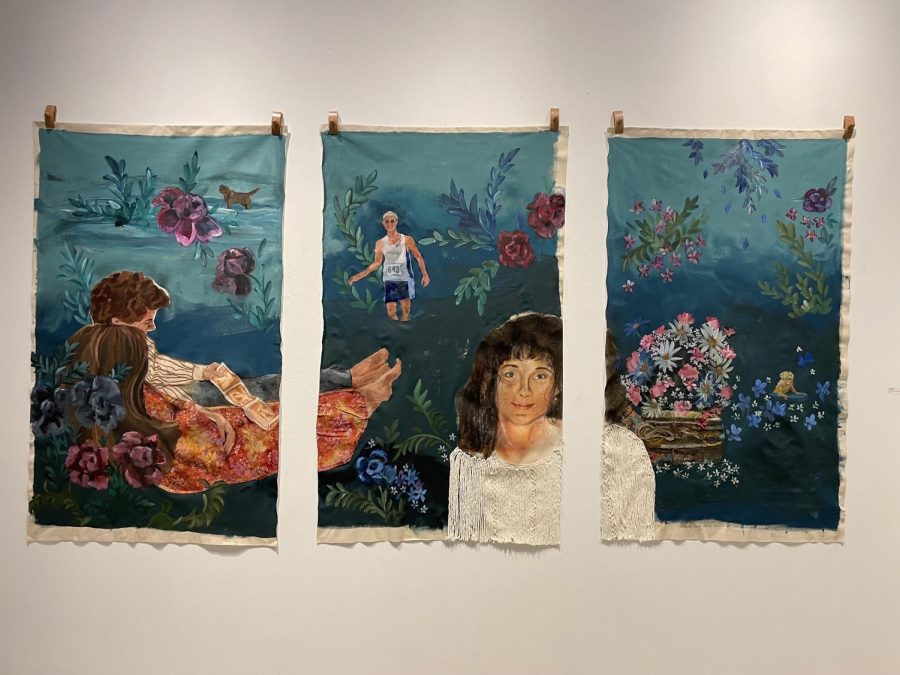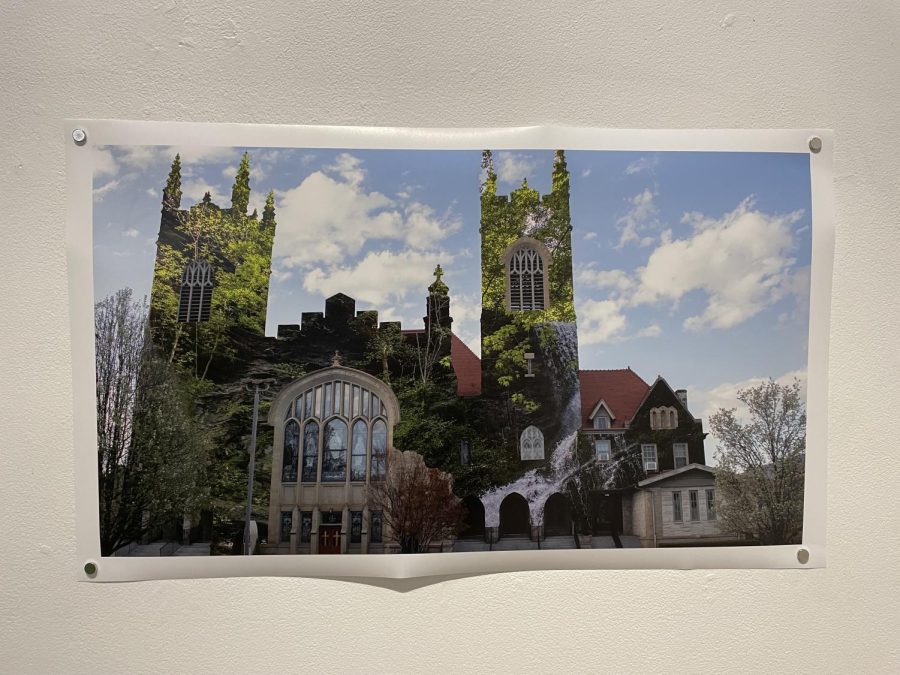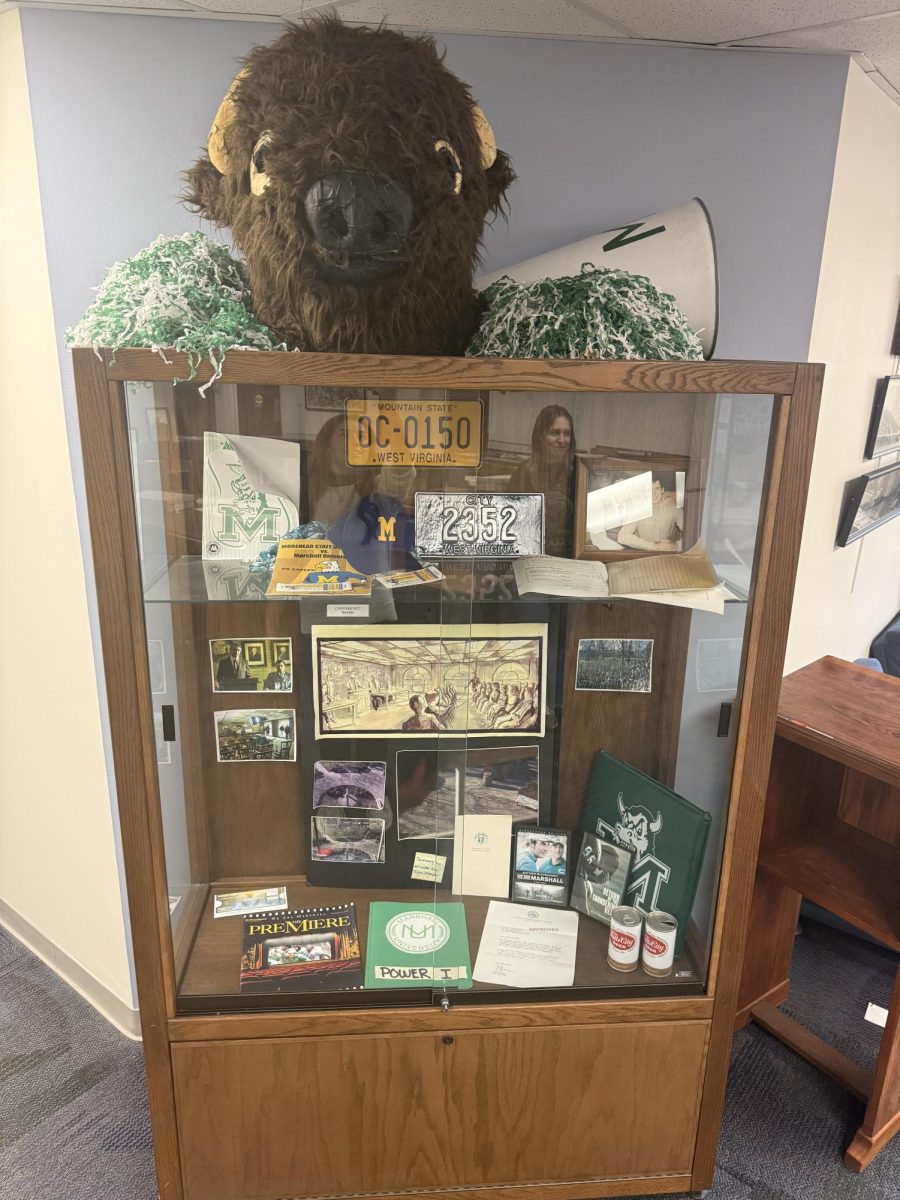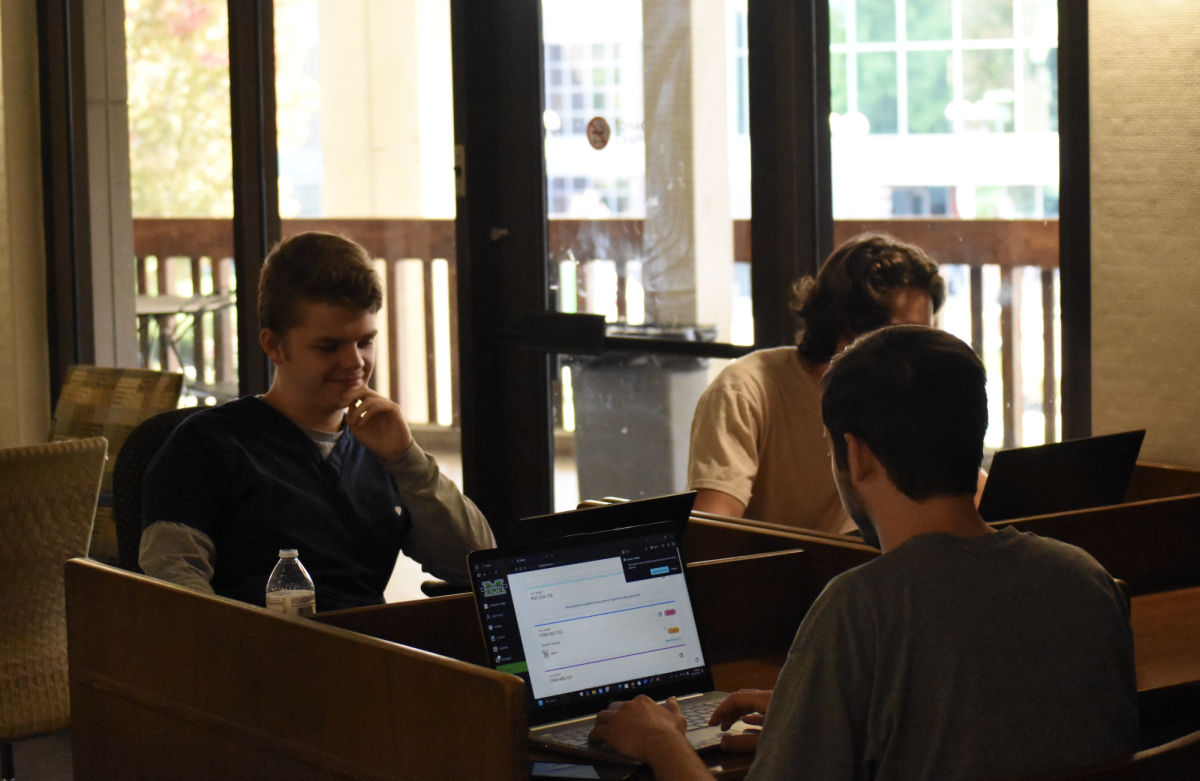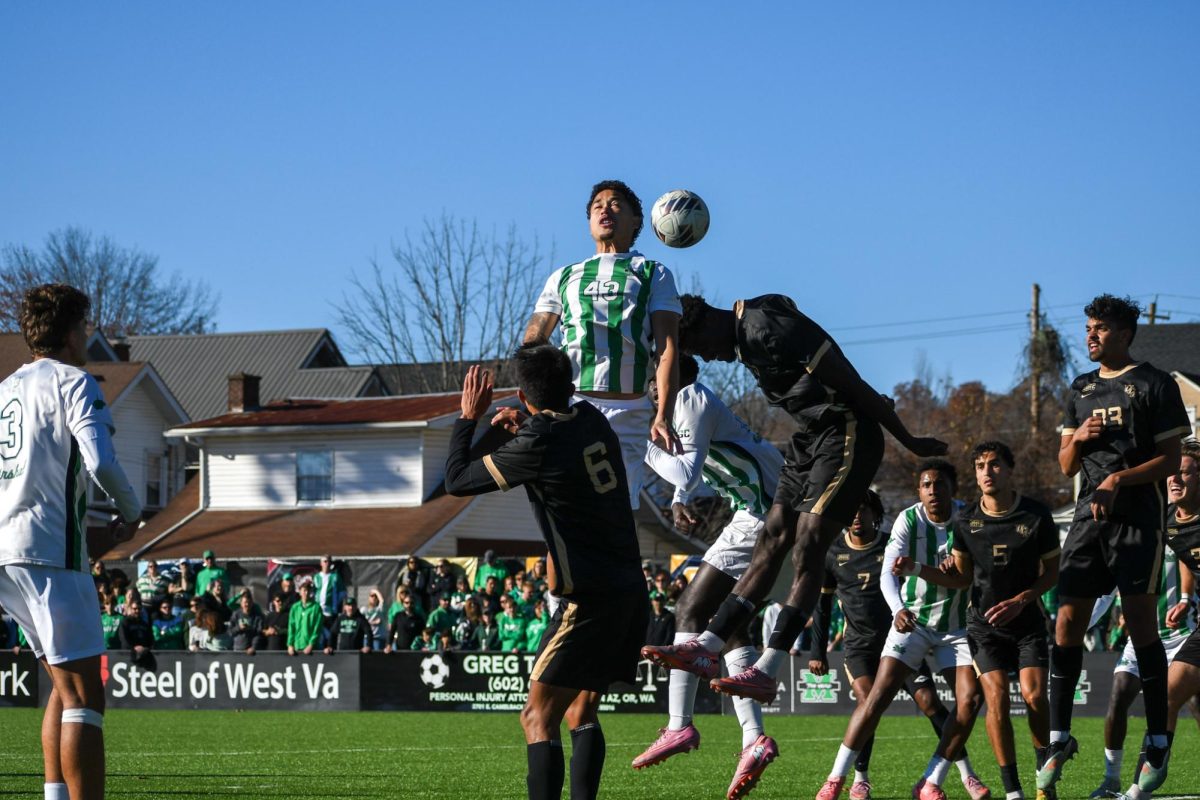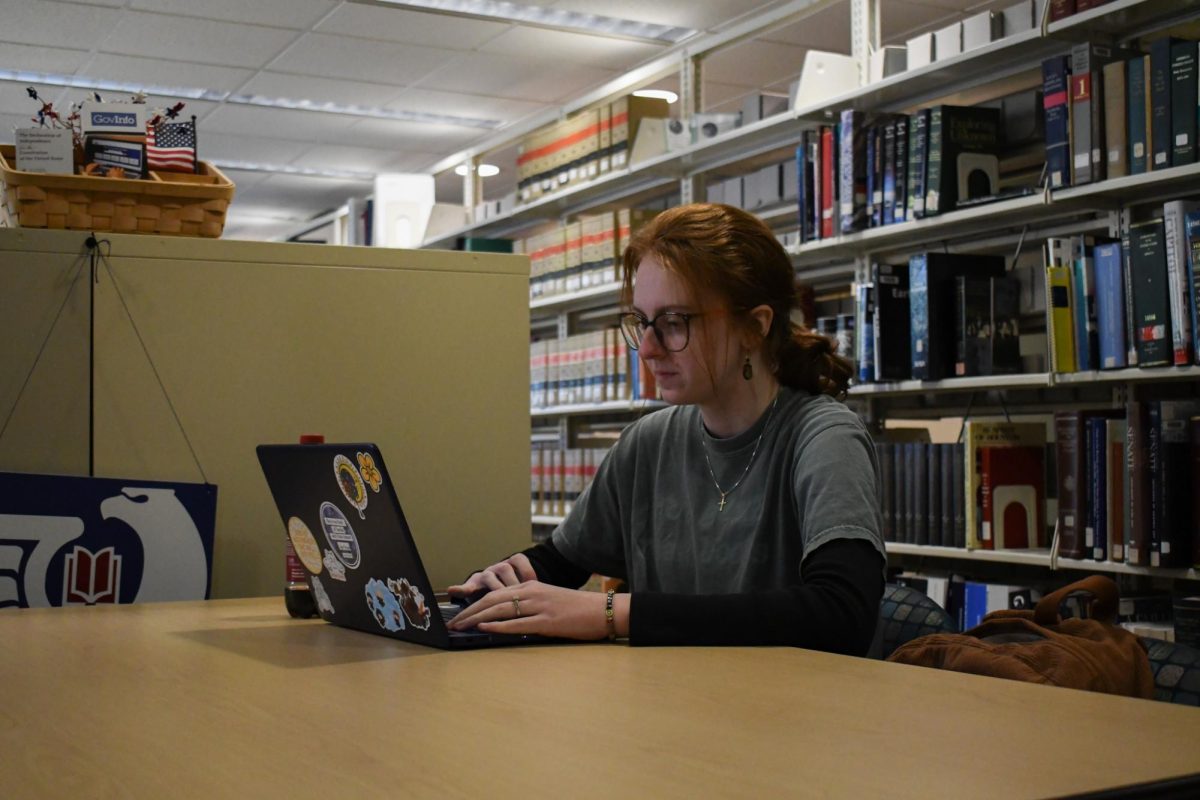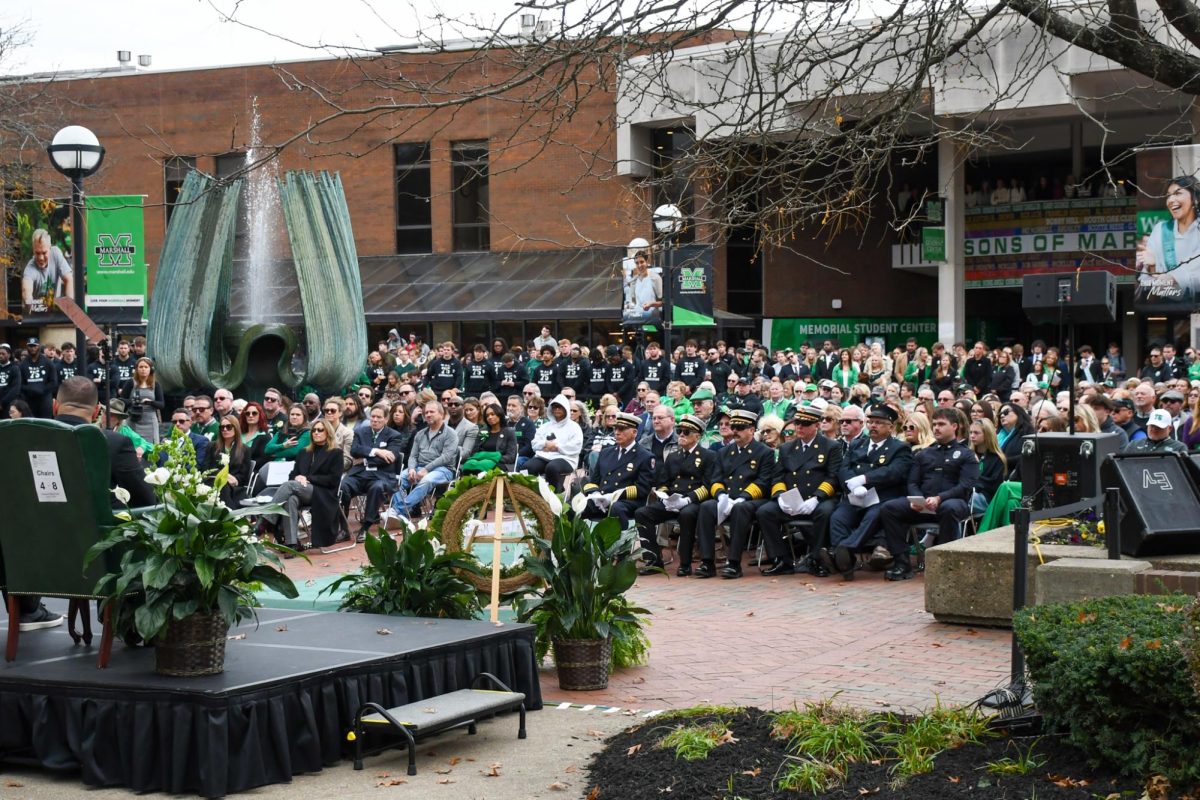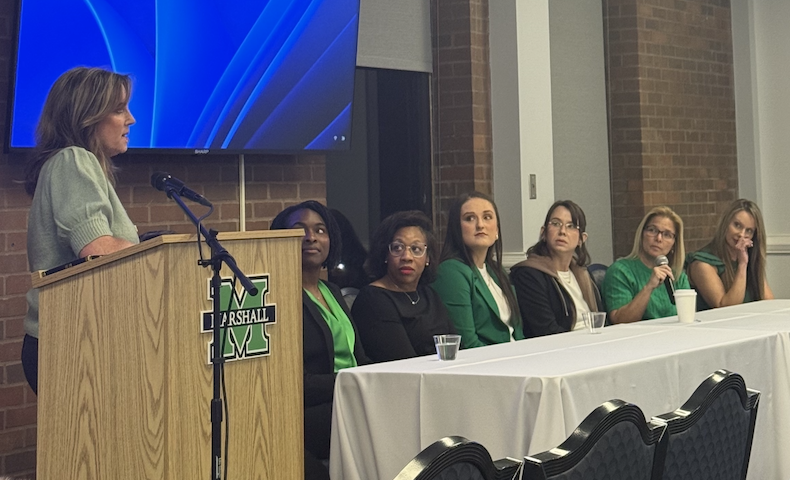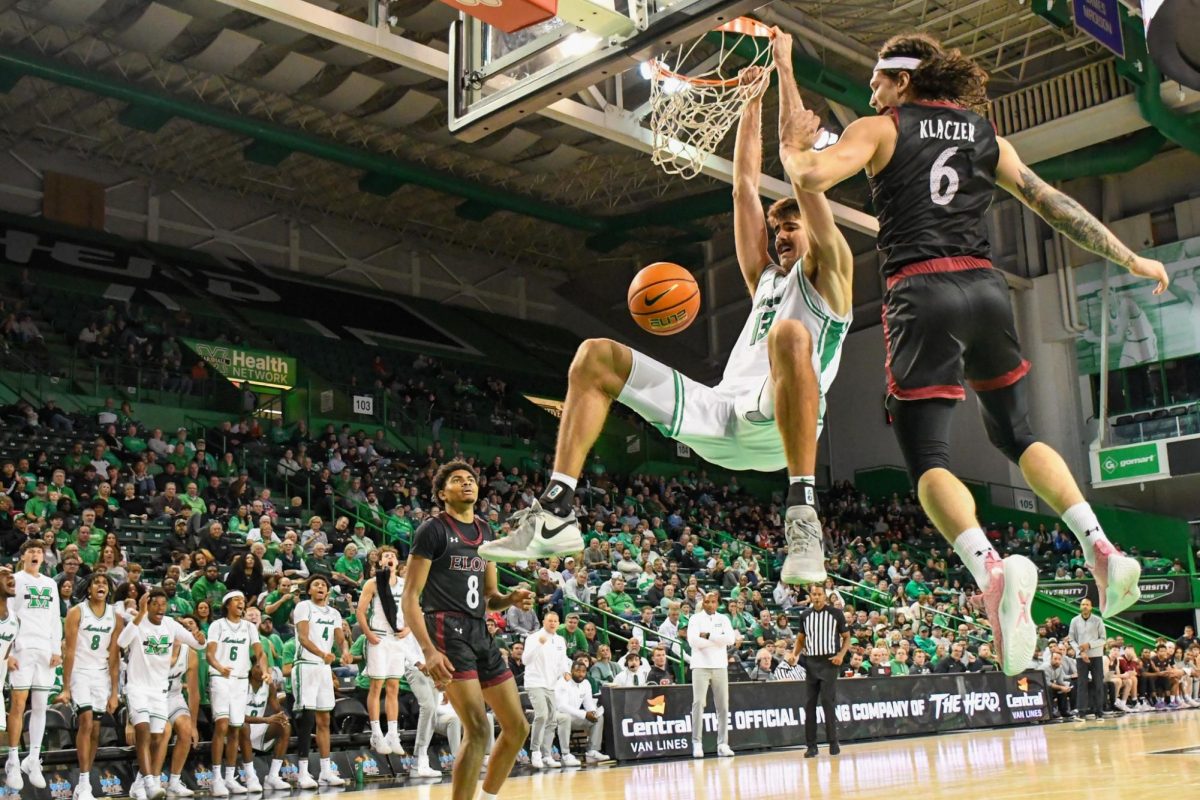Art Student Capstones Cover Range of Themes
Anamnesis by Katlyn F Kitchen
April 12, 2023
Mental health, going back to roots, secondhand life and childhood memories were all core themes prevalent in the second installment of the art students’ capstone projects at the Marshall University Visual Arts Center on Tuesday, April 4.
The exhibit showcased the hard work of four different artists who expressed their themes through several different types of artistic mediums.
In her piece “Anamnesis,” Katlyn F. Kitchen incorporated her childhood memories into a collection of three smaller pieces that form one large piece that paints the memories of her childhood.
“I wanted this to become a reflection of the sudden memories that come to you by your senses,” Kitchen said. “Like when you walk into a candle section and smell the scent that was in your parents’ kitchen while you were growing up or drinking the off-brand chocolate milk that your grandma always had in her fridge.”
Inspiration for her work came from childhood memories as well as other places.
“My piece was inspired by Faith Ringgold’s story quilts,” Kitchen said.
Artist Midnight Moon also incorporated parts of childhood and mental health challenges into a collection of pieces on display.
“I lived in West Virginia in the early 1990s and spent most of my childhood time outside from dawn until dusk. I enjoyed the tactile feel of using my hands: climbing trees, riding bikes, picking flowers or catching critters,” Moon said.
“My love of sensory learning influences how I work as an artist. I love getting ink on my hands, the physicality of carving a wood block,” Moon said.
Moon also drew inspiration from personal experiences to portray mental health challenges and how art can help with expressing emotions.
“My work revolves around the themes of self-perception, body image and mental and physical challenges, inspired by my personal experiences,” Moon said. “As a kid, I was not allowed to express feelings other than happiness, but I found that I could express myself through art.”
Meanwhile, “Naturalia” is the name of the pieces done by Santi’ Rose, whose works included a tent installation along with several prints.
“The idea came to me after talking to one of my mentors and one of my professors about my original idea, “Grief,” which was a collection of pictures representing the five stages of grief and a five to ten minute video going alongside it,” Rose said. “I was unhappy with where the idea was going, and I was losing more and more motivation as time passed.”
After a trip to New York, he discovered a new passion for architecture that guided him in his decision of what to do for a project.
“After returning to WV, I wanted to go back to where I started, to what made me fall in love with photography in the first place,” Rose said, “and make something that I wanted to make, not something that was for a project. I wanted to combine my old love of landscape photography and my new love of cityscape photography.”
“The term naturalia means that nature has reclaimed something, but for me, this project was me reclaiming the old me and going back to my roots,” Rose said.
Secondhand life, on the other hand was the theme of Alexa Pecorelli’s work “Shelf Life,” which incorporated various mediums to create, such as print and video. Furniture was also incorporated into the installation.
“The video playing on this free 2000s TV was recorded on my family’s childhood camcorder,” Pecorelli said, “and the photographs printed behind it were all found in my iPhone photo album from my past four years here at Marshall.”
“I chose to hang these photos as they would be on a college apartment wall and using my own $20 couch for the main piece of furniture,” Pecorelli said.
Utilizing thrift stores and other ways of obtaining second-hand goods, Pecorelli created parts of “Shelf Life.”
“Each piece of furniture in the installation was found at Goodwill or Facebook Marketplace around the tri-state area,” Pecorelli said.
The overall point of “Shelf Life” is to prove that art is all around us, according to Pecorelli.
The Visual Arts Center will host two more groups of capstone students’ works in the coming weeks.


